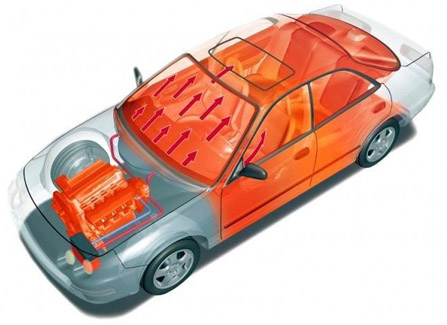 Heating that is independent of engine operation has appeared in buses in the years 50. Currently, it is also used more and more often in passenger cars, raising both comfort, and driving safety. Getting into the warm interior of the vehicle is not only more pleasant than traveling in a cabin chilled overnight, but it also allows the driver to concentrate on observing the traffic situation, and not e.g.. on cleaning windows. Such a device makes even deeper sense, when it can be started remotely and in advance.
Heating that is independent of engine operation has appeared in buses in the years 50. Currently, it is also used more and more often in passenger cars, raising both comfort, and driving safety. Getting into the warm interior of the vehicle is not only more pleasant than traveling in a cabin chilled overnight, but it also allows the driver to concentrate on observing the traffic situation, and not e.g.. on cleaning windows. Such a device makes even deeper sense, when it can be started remotely and in advance.
The additional heating system runs on petrol or diesel fuel. The working medium that transports heat is water or air, the first of which is usually used in passenger cars. Fuel, delivered from the tank by an electric pump, it is burnt, in optimal conditions with regard to exhaust emissions, in a special chamber, into which the outside air is pumped. The heat generated from the fuel heats the working medium in the heat exchanger. In passenger cars, the working medium is a liquid, flooded engine cooling system, and the heat exchanger is circulated in it. The heat is distributed through the standard heating system to the passenger compartment, at the same time, the warm coolant heats the engine, which facilitates its starting at low temperatures.
Circulation of heated air, guided by ventilation ducts, a blower controlled by a thermostat is possible. The aggregate automatically reduces the work intensity, when the temperature in the heat exchanger reaches 71-76 ° C. Heating power
a typical device reaches several kW, aggregate ointment does not exceed 4 kg, and its dimensions allow easy installation under the engine cover. Fuel consumption varies between 0,25-0,5 kg/h.
The moment of switching on the device can be programmed. Programming is done by setting the appropriate timer before leaving the vehicle, or remotely, with a remote control within range 0,6-1 km (in an undeveloped area), on a 24-hour basis on time 10-60 min. There are systems on the market equipped with heating control via a mobile phone. Similar possibilities exist, when it comes to remote activation of ventilation and air conditioning and opening (or closing) roof window.
Independent heating, as well as other elements of additional equipment, initially it was expensive, luxury vehicles, to gradually, as the dimensions decrease, lowering power consumption (currently up to the level 20-40 W plus the power needed to drive the fan) and cost reduction, also become available to users of smaller cars. In the case of self-assembly (not in the dealership) the criteria for selecting a device are the interior size and engine displacement. Such an investment is an expense of the order 4 thousand. PLN or more (with assembly and parts for installation). The parking heater can also work with the gas supply system, provided it is in good technical condition.
Additional independent heating
Visited 65 times, 1 visit(s) today